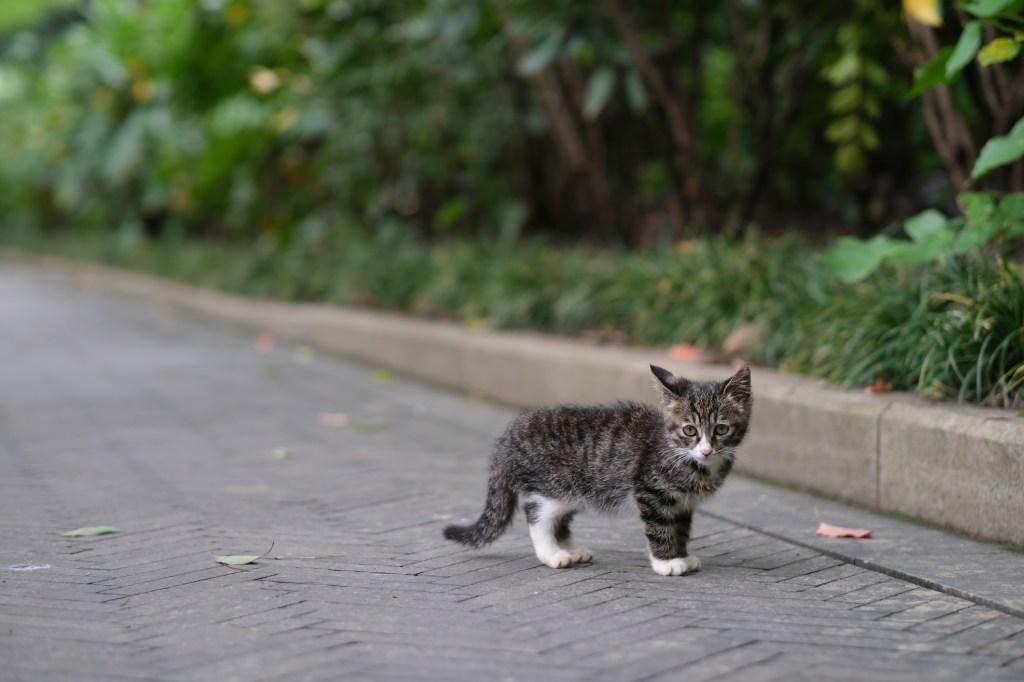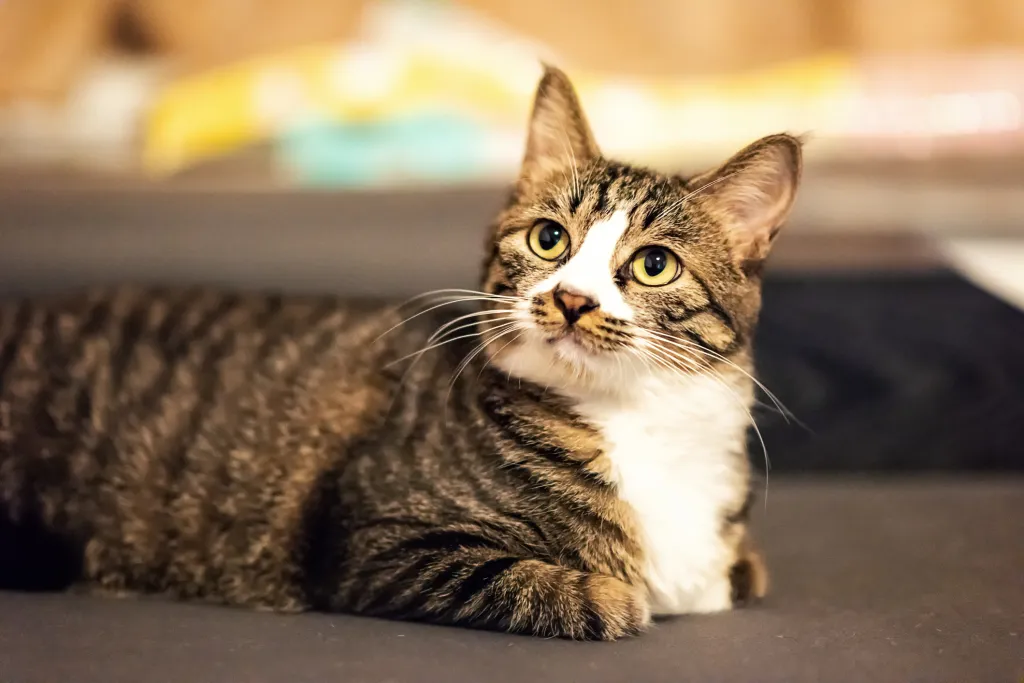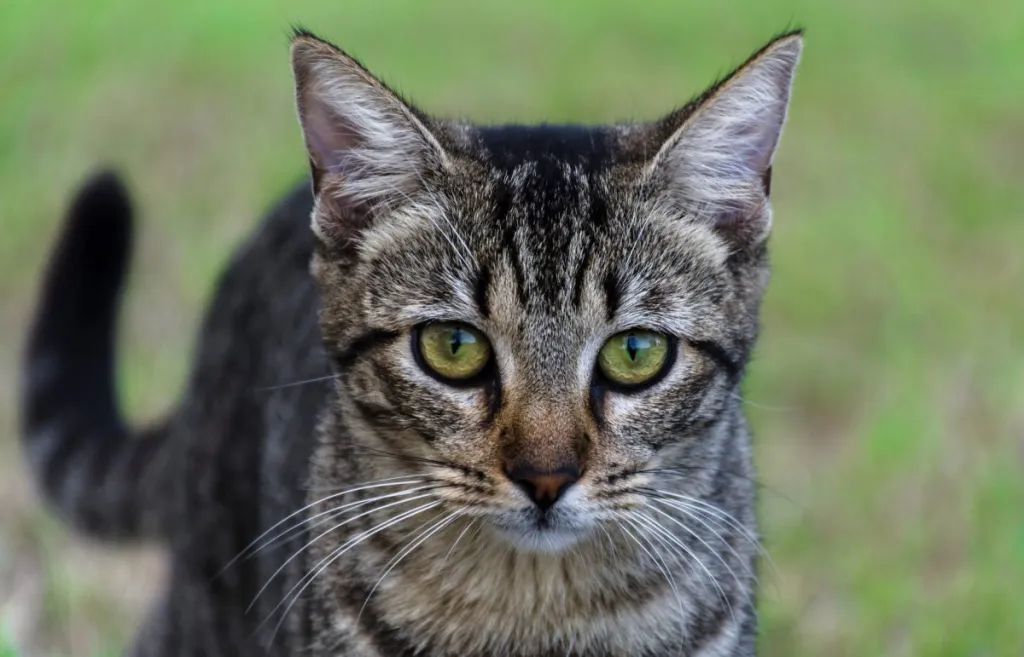The Chinese Li Hua cat, also known as the Li Hua Mau or Dragon Li, is a distinctive and ancient feline breed. The Li Hua holds a special place in Chinese culture and history.
Characterized by a striking spotted coat, almond-shaped eyes, and a robust yet elegant build, the Li Hua cat has been a part of Chinese folklore and art for centuries. This breed originated in China and has been depicted in traditional Chinese paintings and writings, showcasing its cultural significance.
When considering a Chinese Li Hua, it’s advisable to prioritize adopting from rescue organizations or shelters to provide a loving home to a cat in need. However, if you decide to purchase, it’s crucial to choose a reputable breeder. Conduct thorough research to ensure that the breeder follows ethical practices and prioritizes the well-being of their cats. Reputable Chinese Li Hua breeders prioritize the health and temperament of their cats, conduct necessary health screenings, and provide a nurturing environment for the kitties. This active approach ensures that you bring home a healthy and happy kitty while discouraging unethical breeding practices.
Quick Facts
- Origin: China, with a lineage dating back centuries.
- Size: Medium (8-12 pounds)
- Breed Group: Landrace (natural breed)
- Lifespan: 12-15 years
- Coat: Short, dense, and can come in various colors and patterns like solid black, tabby (including mackerel, striped, and spotted), bi-color, and tortoiseshell.
- Temperament: Intelligent, playful, affectionate, independent, curious, adaptable, low-maintenance.
- Exercise Needs: Moderate – enjoys playtime but can also be content lounging.
- Training: Can be trained with patience and positive reinforcement.
- Grooming: Weekly brushing.
- Health: Generally healthy, but some potential for genetic health conditions.
- The Chinese Li Hua is also known as Li Hua and Li Hua Mao.
- The name Li Hua Mao means fox flower, referencing its fox-like head and flower-like tabby pattern.
- There are black marks at the corner of the Li Hua’s mouth, which makes it seem like it is always smiling.
- The Li Hua’s ability to catch vermin is so distinct, it is a breed standard.
Chinese Li Hua Pictures


-
Affectionate with Family
Some cat breeds are typically independent and aloof, even if they’ve been raised by the same person since kittenhood; others bond closely to one person and are indifferent to everyone else; and some shower the whole family with affection. Breed isn’t the only factor that goes into affection levels; cats who were raised inside a home with people around feel more comfortable with humans and bond more easily.

See Cats Less Affectionate with Family -
Amount of Shedding
If you’re going to share your home with a cat, you’ll need to deal with some level of cat hair on your clothes and in your house. However, shedding does vary among the breeds. If you’re a neatnik, you’ll need to either pick a low-shedding breed or relax your standards. This furniture cover can make it easier to clean up cat hair and keep it off your sofa!
-
General Health
Due to poor breeding practices, some breeds are prone to certain genetic health problems. This doesn’t mean that every cat of that breed will develop those diseases; it just means that they’re at an increased risk. If you’re looking only for purebred cats or kittens, it’s a good idea to find out which genetic illnesses are common to the breed you’re interested in.
-
Potential for Playfulness
Some cats are perpetual kittens—full of energy and mischief—while others are more serious and sedate. Although a playful kitten sounds endearing, consider how many games of chase the mouse-toy you want to play each day, and whether you have kids or other animals who can stand in as playmates. A classic wand cat toy like this one is perfect for playful felines!
-
Tendency to Vocalize
Some breeds sound off more often than others with meows, yowls, and chattering. When choosing a breed, think about how the cat vocalizes and how often. If constant “conversation” drives you crazy, consider a kitty less likely to chat.
-
Kid-Friendly
Being tolerant of children, sturdy enough to handle the heavy-handed pets and hugs they can dish out, and having a nonchalant attitude toward running, screaming youngsters are all traits that make a kid-friendly cat. Our ratings are generalizations, and they’re not a guarantee of how any breed or individual cat will behave; cats from any breed can be good with children based on their past experiences and personality.
-
Friendly Toward Strangers
Stranger-friendly cats will greet guests with a curious glance or a playful approach; others are shy or indifferent, perhaps even hiding under furniture or skedaddling to another room. However, no matter what the breed, a cat who was exposed to lots of different types, ages, sizes, and shapes of people as a kitten will respond better to strangers as an adult.
-
Easy to Groom
Some breeds require very little in the way of grooming; others require regular brushing to stay clean and healthy. Consider whether you have the time and patience for a cat who needs daily brushing. You should definitely pick up this awesome de-shedding tool for cats of any hair length!
-
Intelligence
Some cat breeds are reputed to be smarter than others. But all cats, if deprived the mental stimulation they need, will make their own busy work. Interactive cat toys are a good way to give a cat a brain workout and keep them out of mischief. This scratcher cat toy can keep your smart kitty busy even when you’re not home!
-
Pet Friendly
Friendliness toward other household animals and friendliness toward humans are two completely different things. Some cats are more likely than others to be accepting of other pets in the home.
Chinese Li Hua History
The unofficial cat of China, the Li Hua (pronounced “lee-wah”) is thought to be one of the earliest known domestic cats. Based on their mention in old books, they have probably existed throughout China for centuries, but it is only recently that they have been developed as a breed.
This is a natural breed, meaning it was not developed through crosses of other breeds. The Chinese Li Hua was accepted into the Cat Fanciers Association’s Miscellaneous Class in February 2010. The Chinese Li Hua cat is also known as China Li Hua, Dragon Li, Li Hua, Lu Hua Mao, Li Hua Mau, and Li Mao.
Chinese Li Hua Size
The Li Hua typically weighs between 9 and 12 pounds.
Chinese Li Hua Personality
Smart, loyal and lively, the Li Hua is gentle with people but has a reputation as a talented hunter of rats and other vermin. His retrieval skills extend beyond rodents. One Li Hua is said to have learned to fetch the morning paper.
Chinese Li Hua Health
There isn’t a specific and well-documented list of health issues that are particularly associated with the Chinese Li Hua cat breed. However, it’s essential to note that all cats, regardless of breed, can be prone to certain health problems. Genetic factors, environment, diet, and general care play significant roles in a cat’s overall health.
To ensure the well-being of a Chinese Li Hua cat or any cat, regular veterinary check-ups are crucial. It’s also essential to provide a balanced diet, engage in regular play and exercise, and maintain good dental hygiene.
Chinese Li Hua Care
The Chinese Li Hua’s short, smooth coat is simple to groom with weekly brushing or combing to remove dead hairs. A bath is rarely necessary. Brush the teeth to prevent periodontal disease. Daily dental hygiene is best, but weekly brushing is better than nothing. Trim the nails weekly. Wipe the corners of the eyes with a soft, damp cloth to remove any discharge. Use a separate area of the cloth for each eye so you don’t run the risk of spreading any infection.
Check the ears weekly. If they look dirty, wipe them out with a cotton ball or soft damp cloth moistened with a 50-50 mixture of cider vinegar and warm water. Avoid using cotton swabs, which can damage the interior of the ear.
Keep the litter box spotlessly clean. Cats are very particular about bathroom hygiene. It’s a good idea to keep a Chinese Li Hua as an indoor-only cat to protect him from diseases spread by other cats, attacks by dogs or coyotes, and the other dangers that face cats who go outdoors, such as being hit by a car. Li Hua who go outdoors also run the risk of being stolen by someone who would like to have such a rare cat without paying for it.
Chinese Li Hua Coat Color And Grooming
The Chinese Li Hua is large and sturdy with a striking brown mackerel tabby coat that is short and thick. The ticked hairs are black at the root, light yellow in the middle and brown at the tip. It’s sometimes described as a “mouse coat.” The lower belly is a brownish yellow with two vertical and four horizontal leopard spots. Black rings encircle the legs and tail, and the tip of the tail is black.
On the face, a small black mark at the upper corner of the mouth gives the Li Hua the appearance of a smile. The head is shaped somewhat like a hexagonal diamond, longer than it is wide and rounded between the ears. Large bright eyes are green, yellow or brown, but green is favored. Medium-size ears have sharply pointed tips and may be tufted.
The wide, strong, body, carried on muscular legs, is longer than it is tall. The tail is slightly shorter than the length of the body. Chinese Li Hua mature slowly and may not reach their full size until they are 3 years old.
Children And Other Pets
This active but mild-mannered cat is well suited to life with families with children and cat-friendly dogs. He can learn tricks, enjoys interactive toys, and loves the attention he receives from children who treat him politely and with respect. Supervise young children and show them how to pet the cat nicely. Instead of holding or carrying the cat, have them sit on the floor and pet him. Always introduce any pets, even other cats, slowly and in a controlled setting.
Chinese Li Hua Rescue Groups
More Info For You
If you’re also looking for a dog, check out DogTime’s dog breed page!





